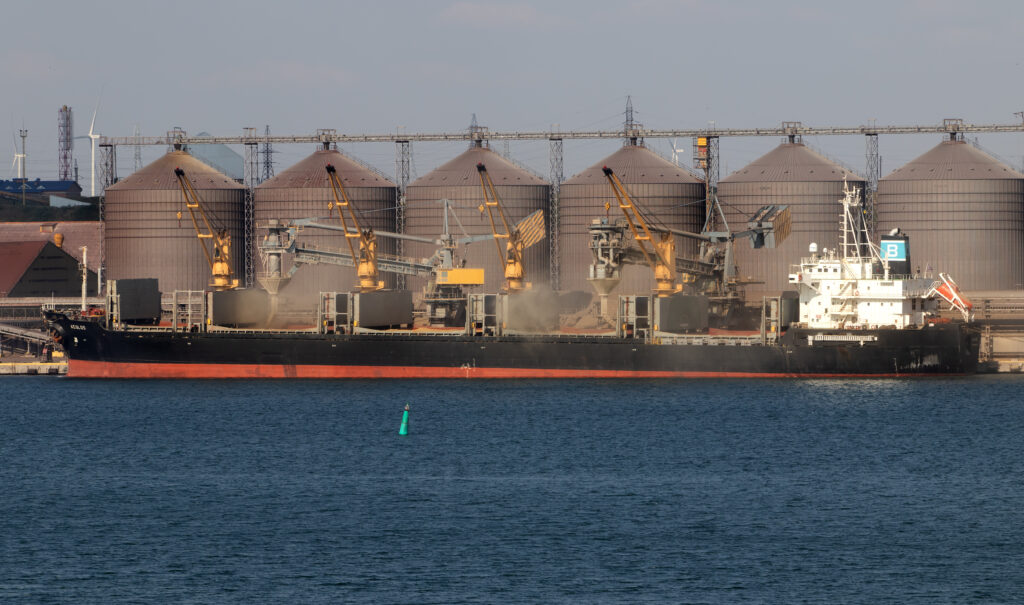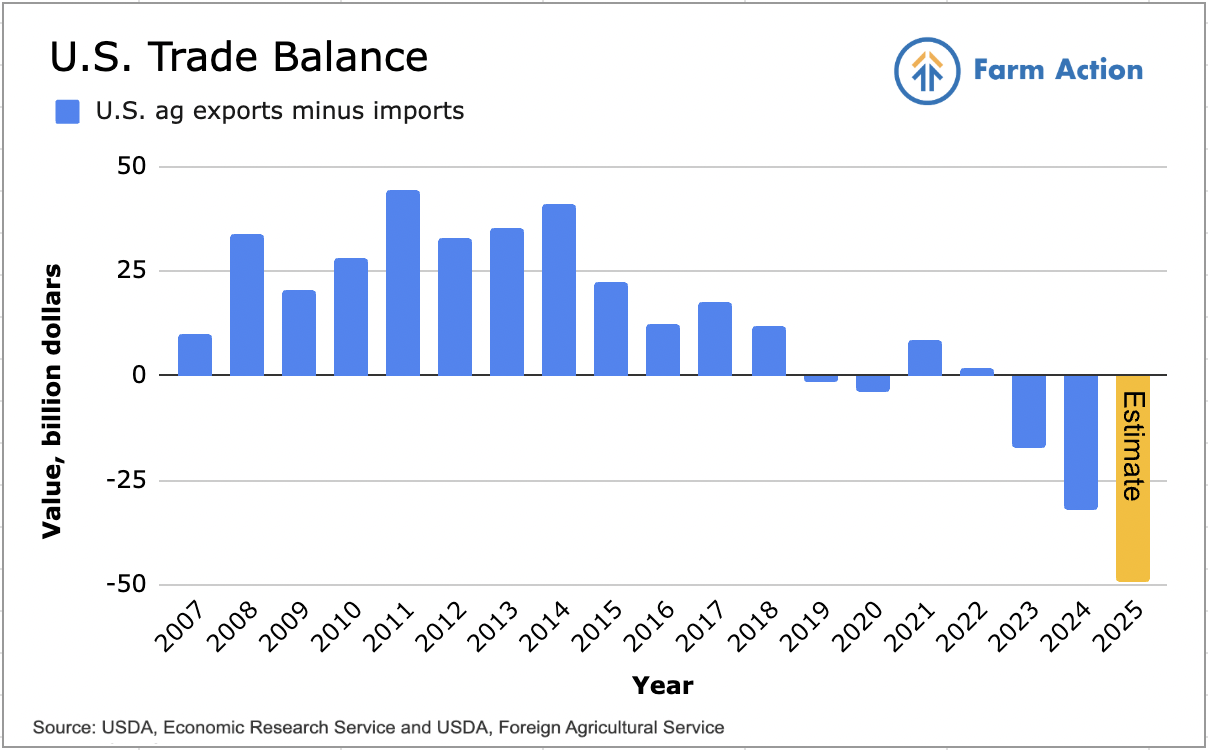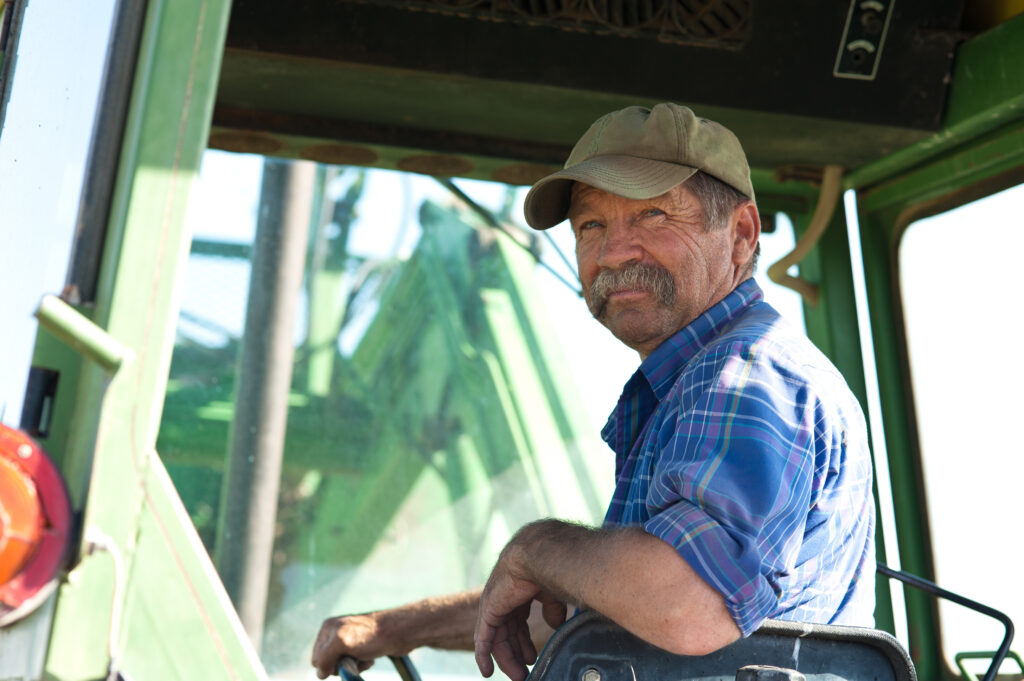As tariff announcements continue to come from the Trump administration, are you wondering what these changes will mean for American farms, businesses, and families? Global trade flows impact all of us, and the various factors at play make this a complex situation for the agricultural sector. Let’s take a closer look at what’s going on.
How Tariffs Used to Work vs. How They Work Now
Back in the day, tariffs were pretty simple. They operated like a tax on goods coming into the country, making them more expensive so people would buy American instead. When we had a lot more farmers and good competition, it made sense. It helped our farmers and businesses compete with farmers and businesses from other countries that had different rules and costs.
But things have changed a lot. Over the last 40 years, the U.S. hasn’t been enforcing antitrust laws against big companies getting too powerful. This has led to a few large corporations controlling most of the food and farming sector. This means less competition, and as a result, we’re not producing as much here at home.
So, when we implement broad, across-the-board tariffs now, it can actually hurt us. With few domestic alternatives to turn to, a U.S. buyer of imported goods either has to lower its profit margin or pass the cost of the tariff onto the consumer. Either way, a U.S. business or U.S. consumer is harmed by broad tariffs on imported goods.
Our Growing Trade Problem
Decades of increasing market concentration have also led to a U.S. agricultural trade strategy centered on producing and exporting large volumes of commodity crops like corn and soybeans used for livestock feed, processed foods, and biofuels. This focus has come at the expense of domestic production of higher value food crops, and as a result we now import more of our essential foods, like fruits, vegetables, and beef. This has led to a growing agricultural trade deficit that we can no longer ignore.
Something big happened in 2019: For the first time in more than 50 years, we bought more agricultural products from other countries than we sold to them. And it’s been happening more often since then. The latest numbers predict we will have a record $49 billion agriculture trade deficit this year. It makes you wonder if we’re still the farming powerhouse we used to be.
A Hard Look at the Current Trade Approach
Across-the-board tariffs, especially on goods with little domestic production and competition, can backfire. It makes things more expensive for farmers and consumers, and people don’t have many other choices in a marketplace controlled by just a handful of corporations. We need a better, smarter way to handle trade because the current approach is counterproductive and hurts American farmers.
One example of the counterproductivity of the current across-the-board tariffs is those proposed on South Korea and Turkey while the USDA’s avian flu strategy depends on importing eggs from these countries to rebuild our supply and bring down prices. Placing tariffs on those eggs when they enter the U.S. will only drive up the prices.
Additionally, when we put broad tariffs on goods, other countries often do the same to us—or worse, stop buying from us altogether. We saw this during the first Trump administration’s trade war with China, a country we rely on to buy the bulk of our corn and soybean exports. China imposed steep retaliatory tariffs on the U.S. and turned to other trading partners to fill their needs for those goods—and we’ve still not reopened many of the markets that were closed to us.
A Better Way: Being More Targeted with Tariffs and Supporting American Production
Instead of implementing broad tariffs, we could support farmers with strategic, targeted tariffs. For example, tariffs on imported beef, lamb, fruits, and vegetables could help our farmers growing and raising those products get back on their feet. This would also make our food supply more secure and help American families access foods grown closer to home.
But a targeted tariff strategy must also be accompanied by better support for local food systems and family farmers growing food for our communities. Today, the majority of agriculture subsidies and programs currently support the production of corn and soybeans, while only 4% of those funds go to fruit and vegetable farmers. This is irresponsible government spending. Until we fully restore U.S. production of our essential food items, we will face the increased costs of these imported foods subject to tariffs.
Helping Farmers, Not Corporations, with Trade Assistance
When China issued retaliatory tariffs in 2018 and 2019, American farmers were devastated and lost about $27 billion in sales. In response, the last Trump administration administered a trade bailout program that sent large payments to big corporations, like $67 million to Brazilian meatpacker JBS, instead of the small and medium-size family farms that needed help.
These bailouts actually hurt rural communities by helping the largest companies and corporate farms get bigger and push out smaller farms. When future trade assistance is warranted, the government must act responsibly and ensure payments are targeted to farmers in need and not big corporations already flush with cash.
A Call for Strategic Change
The Trump administration must change its current approach to trade and abandon the use of outdated broad tariffs that do not work in today’s heavily consolidated marketplace. Instead, the administration should consider a new plan based on strategically targeted tariffs, and combine them with responsible support for farmers committed to growing foods domestically. This approach would protect and expand American food production, balance the agricultural trade deficit, and replace the current economic chaos with certainty.





